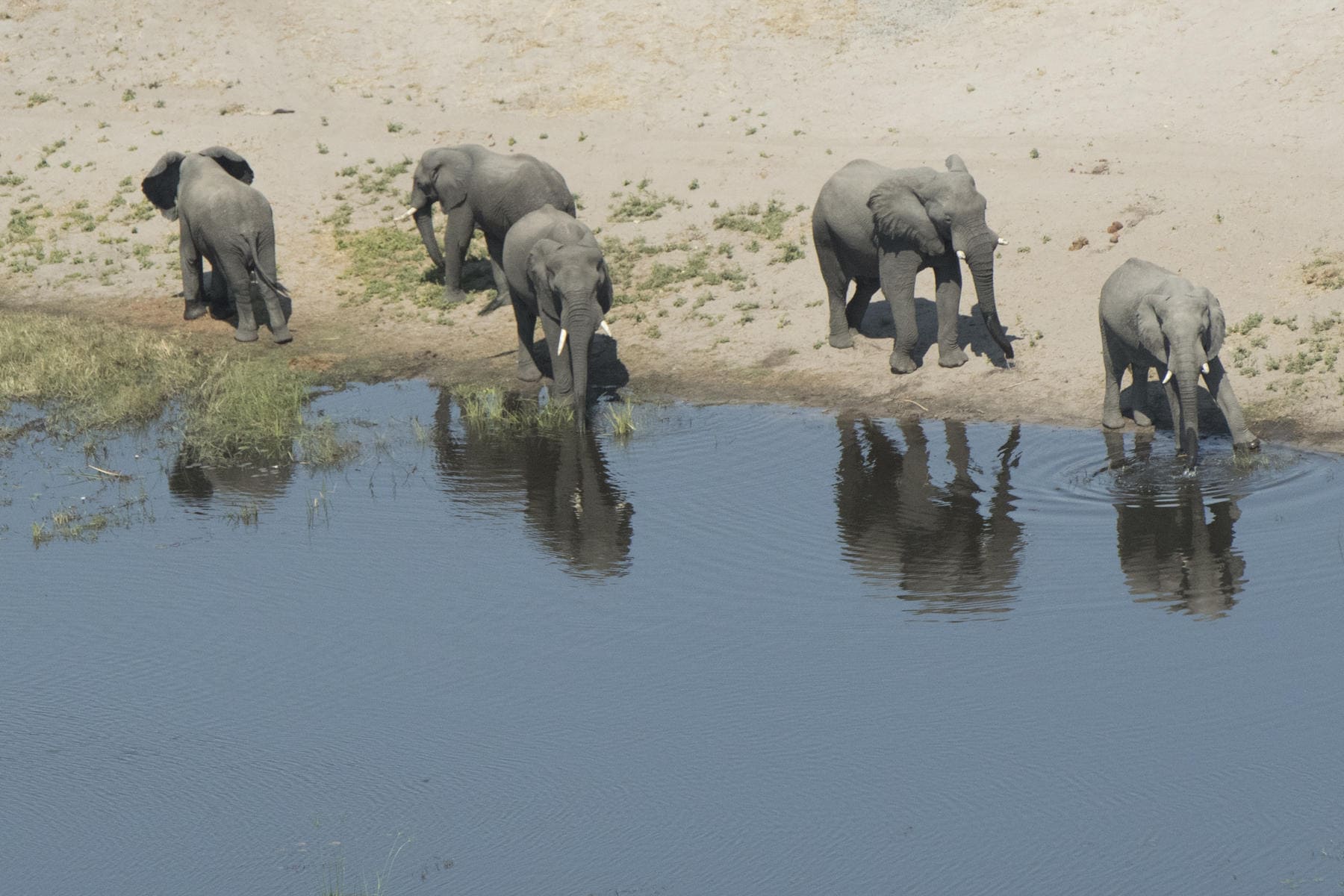Wildlife viewing is still at its peak in October. The lack of vegetation and water forces wildlife to stick around the few remaining water sources, allowing you to see them in full force. However, the dry and dusty weather makes it a challenging month for photography.
Some popular parks to visit in October include the Linyanti Reserve for boat trips, as well as the Moremi Game Reserve, which is a Big Five destination, and the Selinda Game Reserve, which houses lions and elephants as its main attractions.
Weather in October

October is the last month of Botswana’s dry season. Temperatures are warm and dry, and rain begins to increase towards the end of the month.
Average Weather in October
| Temperature | Celsius | Fahrenheit | Rainfall |
| Min | 18℃ | 64℉ | 0.4 inches |
| Max | 35℃ | 95℉ | 1.3 inches |
Destinations to Visit in Botswana During October

Linyanti Reserve
The best wildlife viewing occurs between July and October, the dry season. Wild dogs, lions, and leopards are regularly seen here. As the dry season is at its peak, there are countless activities you can participate in, including off-road driving, walking safaris, and boat trips.
Moremi Game Reserve
Known as a Big Five destination (although rhino sightings are very rare) and located in the famed Okavango Delta, the dry season provides the perfect opportunity to see big game while on safari. You should especially make time for a mokoro safari – a fantastic choice for birding.
Selinda Game Reserve
Also called the Selinda Concession, the reserve houses some big game life. The park’s star animals are elephants and lions, and the dry season is the best time to see them.
Activities to Do in Botswana During October
- Game drives
- Boat safaris
- Walking safaris
- Horseback riding safaris